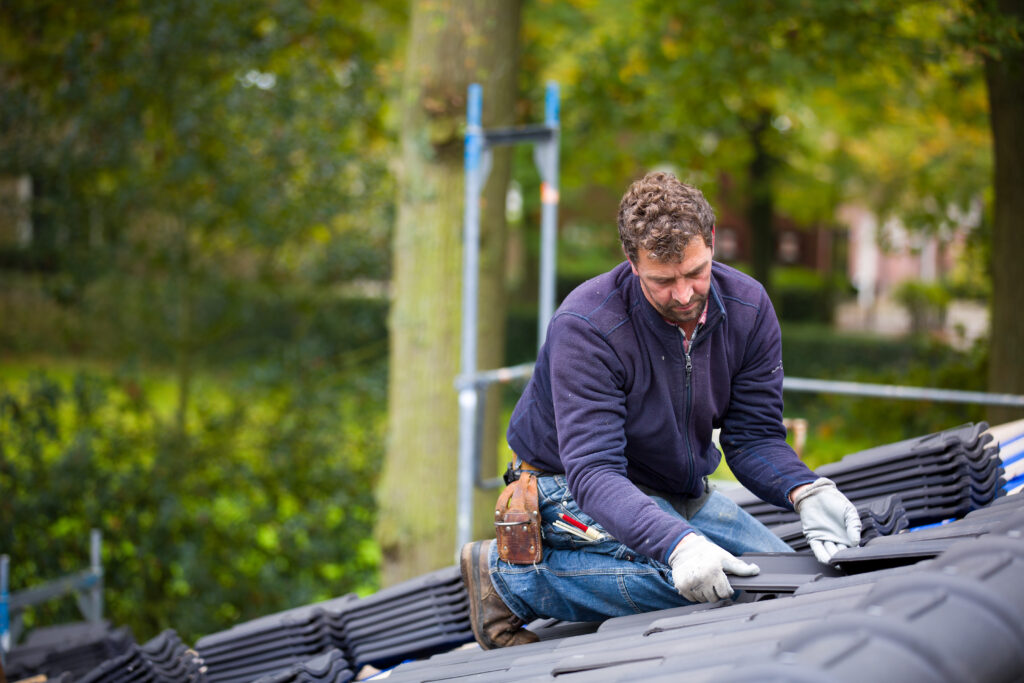The fall lawn care should include regular mowing, timely watering, tracking, fertilization, aeration, overseeding, and adequate pest control. You must make a schedule and stick to it to ensure your grass gets everything it needs to survive the winter and grow strong and healthy in the spring.
Do you think all your lawn care troubles are over as soon as the summer ends? If so, you are very wrong. The work you do during the fall will determine how beautiful your lawn will be next spring. So, you’d better roll up your sleeves and get down to business.
As always I am here to help with my experience and the research I have done. Let’s start!
Lawn Care Tips That Will Help You Get Through Winter Season
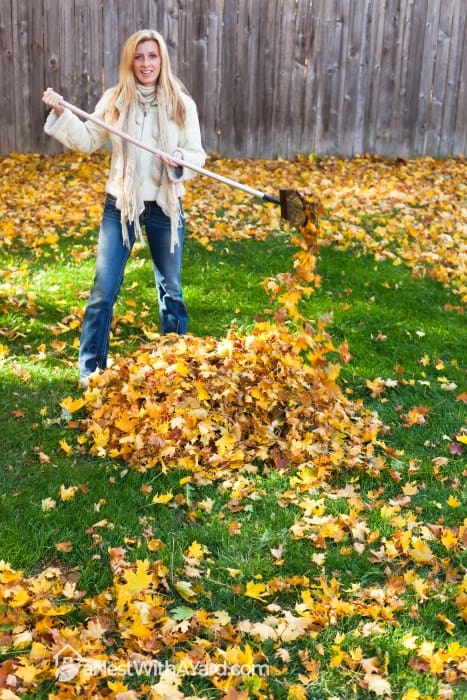
Professionals from the renowned Lawn Doctor company agree that fall is a critical time of the year to take care of your green grass if you want to see it grow strong and beautiful the following spring. According to them, you should use cool and moist weather to strengthen grass roots, eradicate lawn weeds and pests, plant new grass seeds, and prepare your lawn for the winter. Here are their eight fall lawn care tips that I have tried and had success with:
Don’t Stop Mowing
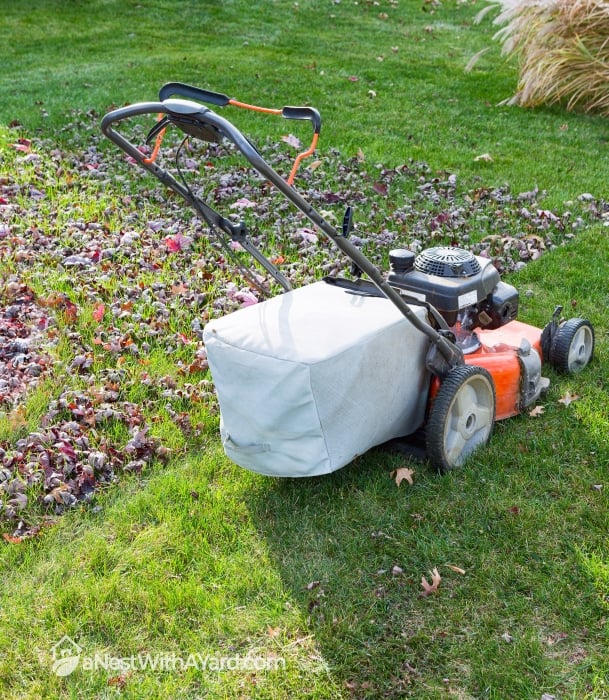
Your grass might not grow as fast as during the summer, but you should continue to mow it. The experts from the University of Minnesota suggest you should keep your lawn at the same height until it stops growing.
They do not advise cutting the lawn short before winter as that can be stressful to your grass and increase the risk of snow mold and winter damage, which, in my experience, can be quite difficult to deal with.
Water Your Lawn Only When Needed
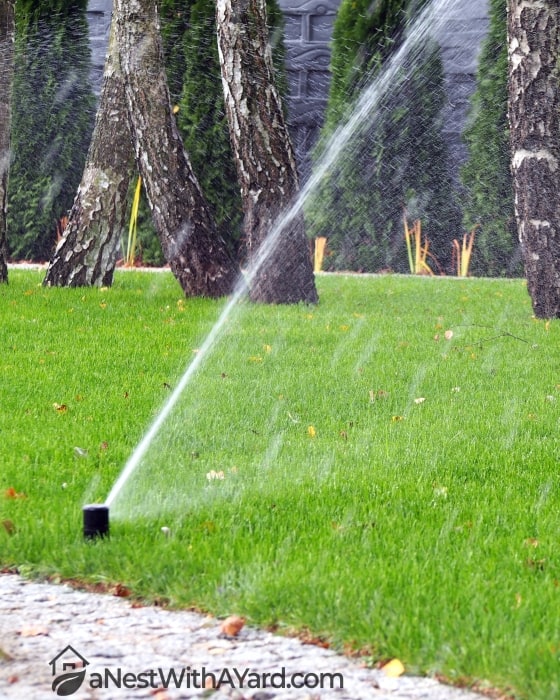
If you are not sure if your beautiful lawn needs watering during the fall season, take the advice of a landscaping expert David Beaulieu from The Spruce magazine and monitor how much rainfall your lawn receives. If it doesn’t get at least 1 inch of water per week, water your lawn as you would during the late summer.
In case your fall grass gets enough rain, water only the overseeded areas and new grass. Stop watering grass after the first fall frost. As I learned as a rookie, there is no point in watering frozen soil!
Rake Your Grass More Often
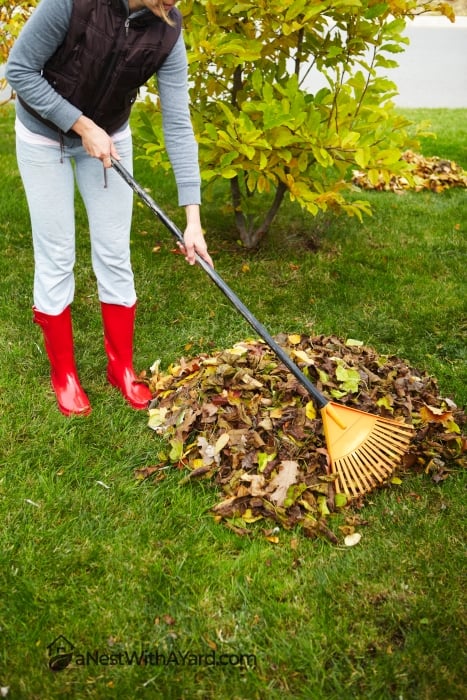
Fallen leaves block sunlight and prevent your grass from making food. The cold weather and moisture might lead to the growth of leaf fungi, as explained by Bill Cook from the Michigan State University Extension.
This is why I always try my best to remove fall leaves ASAP and you should do that too! Besides, raking also helps remove excess thatch.
I usually dry the wet leaves and use them as a natural mulch for my flower beds. You can also use a mulching mower or a leaf blower to chop down the leaves and turn them into compost. Alternatively, you can compost fall leaves, as shown in the video below:
Aerate Your Fall Lawn
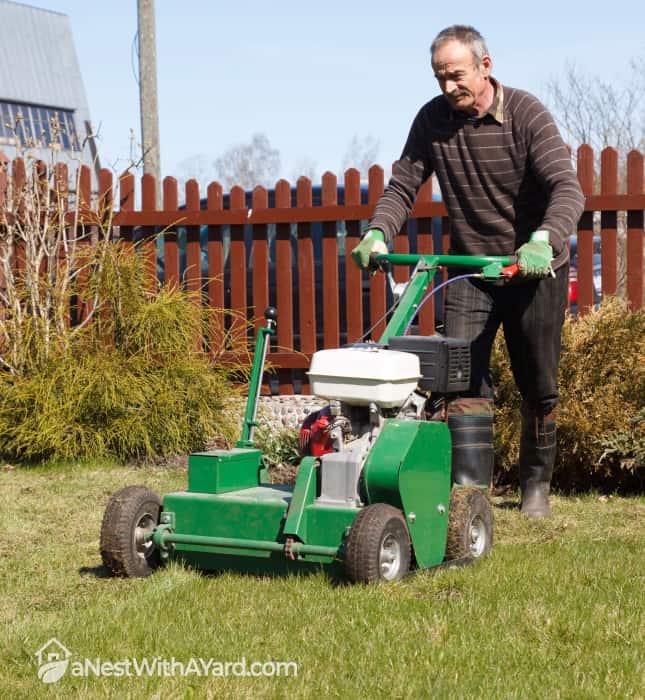
In the words of skilled technicians from the American Turf & Tree Care landscaping company, early fall is an ideal time to aerate your lawn and prevent soil compaction. Depending on your climate, you should do it between mid-August and the beginning of October. It will help your lawn recover completely before going dormant.
Specialists from the Gecko Green lawn care company explain there are three commonly used lawn aeration techniques:
- Spiked aeration (puncturing the soil surface with a spike or sharp-pointed metal)
- Liquid aeration (spraying a liquid aeration product that helps break down thatch and compacted soil)
- Core aeration (using a powered aerator machine to pull up small cores of soil or soil plugs and grass)
I use the excellent old spike, but most lawn care professionals recommend core aeration. Hence, consider investing in a core aerator. It’s on my wish list, too.
Fertilize Your Grass

Fertilization is an essential part of fall lawn care. If you want to prevent lawn diseases and have beautiful, healthy grass in spring, you should never skip this step! The experts from the Virginia Cooperative Extension office agree that when it comes to fall fertilization, timing is everything.
Here is what they suggest you should do depending on whether you have a warm-season lawn or a cool-season lawn:
Cool Season Grass
Fall is an ideal time to aggressively fertilize cool-season grasses (bluegrasses, fescues, and ryegrasses). Lower temperatures and shorter days provide perfect conditions for root growth and food storage in cool-season grasses. From my experience, it is best to perform a soil test before you choose your fertilizer.
Warm Season Grass
Fall is also a great time to prepare warm-season grasses for winter dormancy (bermudagrass, zoysiagrass, centipedegrass, and St. Augustinegrass). As I read in this same article, you should cut your warm season grass a bit higher and perform a soil test to make sure your pH and nutrient levels are okay (if not, use appropriate fertilizer!). It is the best way to introduce warm-season lawns to a period of winter dormancy.
Overseed Your Lawn

I assume that heat stress has left some marks on your beautiful lawn. How do I know? Well, my lawn usually ends up with at least a few brown or bare spots after the summer. My friends and neighbors complain about the same thing too.
Luckily, this problem is quite easy to solve. You need grass seed and some goodwill. Brett Owens, an instructor of horticulture at South Dakota State University, states there are numerous advantages of overseeding your lawn in the fall, such as:
- The new grass does not have to compete with summer weedy grasses, such as crabgrass.
- The soil is still warm enough to accelerate the germination process.
- The cooler air temperature is better for grass growth than summer heat.
- There is plenty of time for the lawn’s root system to grow strong before the winter frost.
- Grass will have additional time in spring to strengthen its roots before the hot summer.
- Fall rain moistens the soil enough to facilitate filling in bare patches and burned spots.
Eliminate Lawn Pests

The experts from the Lawn Love landscaping company warn that not all pests will decrease as the weather cools down in fall. Many pests work on ruining your lawn year-round. I can vouch for that!
If you have a lawn pest problem, try to resolve it ASAP. Work on this issue in early fall to minimize the damage. I usually use pesticides recommended by the experts in my local home improvement store, but it’s also wise to contact a professional pest control service company to help you identify and eliminate lawn pests.
Keep Up With A Strict Schedule

You must maintain a strict fall lawn care schedule. It is essential to apply everything you have learned here on time. If you are late with fertilization, your lawn will not have enough time to absorb the nutrients. Likewise, aerating your lawn while it’s still hot outside won’t have the same effect as doing it later on.
If I learned anything about gardening, it is that you must stick to a precise lawn care schedule throughout the year.
FAQs
What chemicals should I put on my lawn in the fall?
Chemicals you should put on your lawn in the fall are fertilizers. This Old House magazine article suggests using the 20-8-8 formula to stimulate grass growth in early fall and applying a 13-25-12 formula in late October or early November to stimulate root growth before winter sets in.
Should lawn be cut short in fall?
Your lawn should not be cut short in fall. Chiana Dickson from Homes & Gardens magazine explains that mowing your grass too short in fall can lead to weaker grass that might not survive winter frosts.
Should I aerate my lawn in the fall?
You should aerate your lawn in the fall. Professionals from the American Turf & Tree Care landscaping company, suggest you should aerate your lawn between mid-August and the beginning of October, as to prevent soil compaction and have a greener lawn in the spring.
My Final Words

I hope these fall lawn care tips have helped you prepare your lawn for the next season. If you still experience some trouble with your fall lawn maintenance, let me know, and I’ll do my best to help you.
Please share this article so that everyone can get their lawn ready for winter. Thanks!


